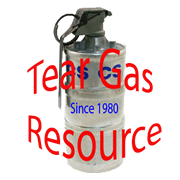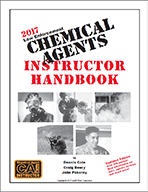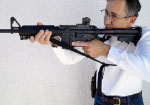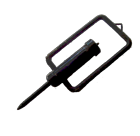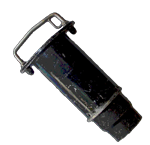May 11, 2020
Chemical agent instructors or experts need to have special skills and
knowledge in all aspects of Non-Lethal chemical agents. Having that
special skill and knowledge should help them and their cities and counties
impede civil judgments. They need to be cognizant of the problems
pertaining to Non-Lethal chemical agent’s deployment past and present.
Part of this knowledge should be an understanding of where Non-Lethal
chemical agents came from and how they have evolved over time. This
knowledge will help them understand and be able to explain why and how we
use Non-Lethal chemical agents today.
Chemical agents have been used for centuries. Cavemen may have been the
first to use chemical agents in hunting and in battle. The use of smoke
from fires to drive animals or adversaries from caves must have been the
earliest use of Non-Lethal chemical agents. The first recorded uses of
chemical agents in history occurred some 2,300 years ago. These were not
necessarily Non-Lethal. About 311 B.C., Chinese armies used stink pots
during frontal assaults against enemy positions. The stink pots contained
red pepper and were burned in vats of oil, creating an irritating and
choking smoke. Wind direction and velocity were key factors in determining
the effectiveness of the stink pots on an enemy. Use of the stink pots
allowed the Chinese to advance on their foes and slay them while they were
recovering from the chemical agent effects. This type of chemical warfare
was not lost on the Japanese. They also employed stink pots and added the
twist of throwing rice paper containers (early grenades) loaded with
pepper in the faces of the enemy.
In the modern era, many of the principles of formulation, application,
delivery, and decontamination have been refined through practical use in
the World Wars, Korean conflict, Vietnam war, Iraq wars and the
Afghanistan continuing war. In the civilian law enforcement community,
Non-Lethal chemical agents are a relative new phenomenon. The first uses
were in France for riot control in 1912 and again in the U.S when the Army
used it in 1921 during the Battle of Blair Mountain, West Virginia. In the
same year, the Army’s Chemical Corps introduced CN to law enforcement.
The modern chemical agent industry is constantly conducting new product
research and development. In the past decade, the rise in popularity of
OC-based chemical munitions continues a long-established tradition since
World War One of attempting to develop and sell the next fast-acting, more
powerful, most effective, less harmful chemical agent and deployment
method.
Short summaries of noteworthy events in the evolution of chemical agents
follow:
[1100 B.C.]
Offensive use of smoke and flame. The book of Judges 15:4, states that
Samson caught 300 foxes, attached firebrands to them and set them out
among the fields of the Philistines to burn their crops
[1000-700 B.C.]
The Assyrians, who were masters of siege craft, use flaming arrows and
liquid fire. No true chemical formulas existed for these fire weapons–each
army uses materials at hand. The Assyrians use burning pitch or crude
petroleum. Incendiary materials consisted of combinations of sulfur,
pitch, naphtha, bitumen, and quicklime. The smoke, along with the fire,
was used to drive adversaries from their fortified positions.
[700-480 B.C.]
The common sponge was used in ancient
Greece as
a gas mask...
[600 B.C.]
Solon, the legislator of the Athenians, contaminates the River Pleisthenes
with hellebores (skunk cabbage) giving the defenders of Kirrha violent
diarrhea that lead to their defeat. This is the first recorded use of
plants as a source of chemicals for warfare.
[431-404 B.C.]
During the Peloponnesian Wars, wood saturated with sulfur and pitch is
burned at the base of walled cities. The irritating and sometimes toxic
smoke (sulphur dioxide gas) demoralize and kills the occupiers of the city
allowing for a breach of the walls in the world’s first known act of
chemical warfare. A sudden rain made the first attack at Platea and Pelium
fail, but five years later the same type of attack was successful.
[311 B.C.] [200 B.C.]
A Carthaginian general orders a retreat, leaving behind a large quantity
of wine poisoned with mandragora, a root containing a narcotic. After the
enemy soldiers drink the wine and fall asleep, the Carthaginians return
and massacre them.
[ca. 200 B.C.]
Carthaginian general Maharbal purposely retreated from his encampment and
left behind a large stock of wine that he treated with mandagora, a toxic
root which produces a narcotic effect. The enemy, upon drinking the
tainted wine, fell into a deep sleep and the Cartheginians returned to
slay their enemy.
[673 A.D.]
Byzantines (or Constantines) use “Greek Fire” (mostly an incendiary
device) to repulse attacks on Constantinople by Arabs, Bulgars, and
Russians (Saracens). Greek Fire is invented by a Syrian chemist and is a
closely guarded secret for several centuries. To this day, historians are
unable to agree on the composition and use of Greek Fire. It is believed
to have been comprised of a mixture of sulphur, quicklime, pitch, resin,
naphtha, and saltpeter combined in a large tube. Historians do agree on
three characteristics, however, 1) It burned in water. 2) It was liquid in
form; and 3) When used at sea, it was shot from tubes or siphons located
in the bows of special ships. Some sources say the mixture was ignited by
contact with water, while others say it was ignited as it came from the
tube in a flamethrower-type effect. This mixture maimed and killed the
Saracens and drove them from barricaded positions. Its use as a naval
weapon allowed the Byzantines to retain supremacy over the Muslims in the
Mediterranean.
[1200-1300 A.D.]
The Mongols create smoke screens by sending out small detachments to start
prairie fires. The smoke screens are used both to deceive the enemy as to
the Mongol intentions, and to hide movement. Soldiers of the Caliph of
Baghdad filled ceramic, glass, and clay pots with flaming petroleum and
flung them at their enemies. This technique is also used against the camp
of Louis IX at Damietta during the crusades.
[1200 A.D.]
During the 13th century, improvements are made to Japanese rice paper
grenades. Pepper mixed with oil is loaded in glass and clay jars. When the
jars break on an adversary, the oil ignites. The jars allow the chemicals
to be launched and catapulted greater distances. Defensive measures
employing boiled cowhide suits afford the wearer some protection from
burns. Metsubishi, or "eye closer", were used to temporarily, or sometimes
permanently, blind the enemy. Hollowed out egg shells, paper bags and
short bamboo tubes were filled with a combination of sand, metal filings
and pepper and were used to attack the eyes of an enemy. Egg shells and
paper bags were used by throwing the fragile containers at the opponent's
face, causing it to break on impact and scatter the contents across the
face and into the eyes. Bamboo tubes were sealed with paper or wax and,
when the seal was broken, the tube was flung in the direction of the
opponent, sending the contents into the face, blinding him. All these
techniques are used today incorporating Oleo Resin Capsicum (OC).
[1212 A.D.] During the middle age’s piracy was already an ancient
profession. A renegade Flemish cleric named Eustace the Monk plunders
French shipping. He is forced to flee England in 1212. During 1217 in the
Straights of Dover, Eustace attacks an English shoot bags of caustic lime
powder attached to arrows to blind the attacking pirates. During the
one-sided battle, Eustace is captured and beheaded on the spot. Other
pirates use sulfurous “stink bombs” (tear gas) and drums and bugles
(psychological warfare) to disorient the crews of opposing ships.
[1300 A.D.] During the siege of Tarantine, Italy the smell of more
than 2,000 cartloads of horse manure is used to irritate the occupants of
the city. The manure also carries disease that makes residents sick. Some
historians believe this to be the first recorded use of biological agents
in warfare.
[1346 A.D.]
Crimean Tartars catapult plague-infected corpses into an Italian trade
settlement.
[1456]
During the middle ages, Greek Fire and biological agents are used in
warfare. Attackers of castles and walled cities catapult Greek fire-soaked
rags over city walls to disorient and burn the defenders. They also
catapult dead bodies infected with plague into cities. The tactic proves
too effective. The great plague epidemic during the middle ages was
attributed to one of these attacks. This epidemic killed half the
population of Europe.
[1492]
Christopher Columbus discovers peppers. In his log, he wrote "there is
also plenty of ají, which is their pepper, which is more valuable than
black pepper, and all the people eat nothing else, it being very
wholesome" The word ají is still used in South American Spanish for chili
peppers.
[1548] Cayenne pepper is introduced to Britain from India.
[1592]
Korea’s Admiral Lee Soon Shin invents the Turtle Ship, the world’s first
iron clad ship and introduces it to naval warfare. As Admiral Yi and his
armada advance across the East Sea to meet the enemy. The dragon’s mouth
spewed smoke and flame. The smoke provided cover for the advancing armada
and the intense flame could be used at close range against enemy ships.
[1675] Article 57 of the Strasbourg Agreement of 27 August between
the French and German Armies directs that neither side will use poisoned
bullets. This is the first known international agreement prohibiting
weapons of chemical origin.
[1700]
King Charles XII of Sweden uses a smoke screen to cross the Dvina River in
the face of the opposing Polish-Saxon army. The smoke screen is generated
by burning large quantities of damp straw.
[1761]
British General Jefferey Amhert orders smallpox-infected blankets given to
Native Americans during Pontiac’s Rebellion. This leads to an epidemic
among the native Indians. This is the first recorded use of a biological
weapon in the United States.
[1771]
Cayenne appears in Miller’s Garden Dictionary, proving it was cultivated
in England at the time.
[1774]
Swedish chemist Carl Wilhelm Scheele discovered chlorine, a powerful
irritant that can damage the eyes, nose, throat and lungs. Cornish chemist
Humphry Davy in 1810 established the gas was a pure element. He named the
yellow-green gas “chlorine”, from the Greek word “chloros”, meaning
green/yellow.
[1785]
Jean-François
Pilâtre de Rozier invented
a respirator.
Primitive respirator examples were used by miners and
introduced by Alexander
von Humboldt already
in 1799, when he worked as a mining engineer in Prussia.
[1797]
Napoleon attempts to infect the inhabitants of the besieged city of Mantua
with swamp fever during his Italian campaign.
[1846]
The Earl of Dundonald devises a plan to use artillery shells filled with
chemical substances, including a self-igniting liquid. The British War
Department considers using these shells in the Crimean in 1855. The plan
fails on technological grounds, namely the delivery system. Similar plans
are also considered during the American Civil War and not implemented for
the same reasons.
[1847-1849]
The forerunner to the modern gas mask was invented in 1847 by Lewis
P. Haslett,
a device that contained elements that allowed breathing through a nose and
mouthpiece, inhalation of air through a bulb-shaped filter, and a vent to
exhale air back into the atmosphere. According to First Facts, it states
that the "gas mask resembling the modern type was patented by Lewis
Phectic Haslett of
Louisville, Kentucky who
received a patent on June 12, 1849."
U.S. patent #6,529
issued to Haslett, described the first "Inhaler or Lung Protector" that
filtered
dust
from the
air.
[1855]
During the British Siege of Sebastopol a British Admiral submits a plan to
use poisonous smoke to reduce the Russian Garrison. Lord Dunnaldon wants
to burn between 400 and 500 tons of sulfur with 2,000 tons of coke. The
wind is to carry the smoke onto the garrison. The British Government
thinks the plan is feasible but never implements it.
[1862]
During the civil war, John Doughty formulates a plan to use mustard gas.
The war Department rejects his plan. Mustard gas was not used until WWI by
the German Army.
[1863]
July–Vicksburg, Mississippi: During the Confederate retreat, General
Johnston’s Army fills ponds and lakes with bodies of dead livestock,
poisoning the water supply and slowing the advance of General Sherman’s
troops. The incident marks the first time Americans accept this type of
action as a legitimate wartime measure.
[1864]
22 June–Letter from Forrest Shepherd, Economic Geologist to President
Lincoln reads: “I find that by mingling strong sulfuric acid with strong
hydrochloric acid, or muriatic acid on a broad surface like a shovel or
shallow pan a dense white cloud is at once formed, and being slightly
heavier than the atmosphere rests upon the ground and is high enough to
conceal the operations behind it. sprinkling of the two acids and a light
breeze will waft it onward. When a cloud strikes a man its him to
coughing, sneezing etc. but does not kill him, while it would effectively
prevent him from fi ring a gun, or if he should fire, to aim at his
object.”
[1864]
During the United States Civil War, a siege at Fort Sumter in Charleston,
South Carolina took place. The Confederate Army holds Northern Troops
hostage in the fort. The Confederates want the North to leave South
Carolina. The Confederates use Greek fire in an attempt to drive the Union
forces out. They were successful in their attempts. It is however one of
the first uses of a non- (or in this case, less-than) lethal chemical
agent in the United States. Federal troops make plans to use chlorine gas
to retake Fort Sumter. They never carry out their plans.
[1869]
Graebe, a German chemist, discovers ethylbromacetate, the forerunner of
CN. It is developed as a liquid as opposed to the CN solid. The chemical
is not used for many years after discovery.
[1874]
Conference of Brussels, signatories reach an agreement prohibiting the use
of poisonous weapons.
[1877]
CN patented by Graebe.
[1899] The First Hague Conference tries to outlaw projectiles
carrying chemical agents. One of three declarations state that “the
Contracting Powers agree to abstain from the use of asphyxiating or
deleterious gases”. Twenty-seven nations, including Germany finally ratify
this treaty. Great Britain and the United States did not ratify the
treaty. The agreement lasts until World War One. The American
representative, Navy Captain
Alfred Thayer Mahan,
justified voting against the measure on the grounds that "the
inventiveness of Americans should not be restricted in the development of
new weapons.”
[1907]
The Hague Convention chemical weapons ban is ratified. The United States
does not participate.
[1912] France–Paris Police are credited with the first use of
chemical agents in law enforcement. In 1912 they use “hand bombs” on
organized gangs of criminals. The substance in these bombs is a fore
runner of CN, called ethylbromacetate. Ethylbromacetate is a volatile,
vapor-producing agent that causes weeping or tearing. The effects gave
rise to calling Non-Lethal chemical agents by the name tear gas or weeping
gas. This law enforcement use led to military chemical warfare.
[1912]
The "Safety Hood and Smoke Protector" invented by
Garrett Morgan
in 1912, and patented in 1914. It was a simple device consisting of a
cotton hood with two hoses which hung down to the floor, allowing the
wearer to breathe the safer air found there. In addition, moist sponges
were inserted at the end of the hoses in order to better filter the air.
This was later modified to include its own air supply, leading to World
War One era gas masks.
[1912]
Wilbur Scoville develops the Scoville Organoleptic Test.
[1913]
Germans discover DM (diphenylaminechlorarsine) and use it against the
French.
[1914]
August–During the first battle of the Marne the French used exploding 26mm
hand grenades containing ethylbromacetate against the Germans. This came
to be known, as the birthday of what would become modern tear gas. They
were ineffective in open country and soon discarded by the French as
worthless. French troops lobbed grenades filled with tear gas at their
German enemies, who apparently were unaffected and did not even detect the
gas.These French attempts were later used by Germany to argue that they
were not the first to break the articles of the 1899 Hague Convention.
[1914]
27 October–Germany fires chemical projectiles at Neuve-Chappelle. The
round was of a low potency and is discontinued.
[1915]
The German chemical industry produces many lethal chemical weapons during
World War I (e.g., nerve gases) and develops new tear gases. For example,
xylyl bromide was packed in 150mm artillery shells and used during battle
against the Russians at Bolimow. This early military use of tear gas was
not judged to be a success, owing to the failure of the chemical to
vaporize in the subzero temperatures on the battlefield. However, it
provided an early indication of the importance of weather conditions to
the effectiveness of these agents.
[1915]
22 April–Germans responded to the French use of ethylbromacetate with 168
tons of chlorine gas in Ypres, Belgium. Five thousand French troops, two
thousand Canadian and English troops were killed, and ten thousand were
injured. Fritz Haber was a
German chemist who received the Nobel Prize in Chemistry renowned
for work in synthesising ammonia for fertilisers and explosives,
hypothesised that once the main chlorine cloud had knocked out enemy
troops, German soldiers could move in without undue risk. As some chlorine
gas would blow away, the attacks were intended to render enemy troops
incapable of fighting without lasting physical effects. German chemists
were recruited to Pioneer Regiment 36, a special unit dedicated to gas
warfare. Its troops were trained and equipped to handle chlorine using
protection when releasing the gas. Haber oversaw the opening of almost
6000 cylinders of chlorine gas.
[1915] 1 May–French troops equipped with gas masks on the Western
front stopped German attacks. This led to poisonous gas losing its
effectiveness as a weapon of war. The gases used during WWI progressed
from Weeping Gas to Phosgene to Chlorine to Mustard Gas.
[1915]
CN is used during troop gas mask training. In the great carnage of 1916-17
there were approximately 17,700 gas casualties in the battles for the
Somme, Chemin des Dames,
[1917]
Aberdeen Proving Ground, the Army’s oldest active proving ground, was
established on October 20, 1917, six months after the United States
entered World War I. The facility’s mission was to provide the military a
facility where design and testing of ordnance materiel could be carried
out near the nation’s industrial and shipping centers. The installation
comprises two principal areas, separated by the Bush River. The northern
area is known as the Aberdeen Area, and the southern sector, the Edgewood
Area—formerly Edgewood Arsenal. The two areas were administratively
combined in 1971.
[1918]
June 28 The United States Chemical Warfare Service was established,
combining activities which until then had been dispersed among five
separate agencies of Government.
The War Department created it to organize the development of offensive
munitions and defensive equipment (gas alarms and gas masks, primarily).
MG William Sibert, the architect of the Panama Canal and former commander
of the 1st Division, became the first chief chemical officer of the
Chemical Warfare Service. The Army built four chemical warfare agent
production plants on the grounds of Edgewood Arsenal in Maryland to
produce chlorine, chloropicrin, phosgene, and mustard agent, producing
more than 1,600 tons of agent by the end of the war None of it, however,
made it overseas prior to the end of the conflict. By the end of the war,
the Chemical Warfare Service would include 1,680 officers and 20,518
enlisted personnel. Its insignia, designed in 1917, was a pair of crossed
chemical retorts with a benzene ring in the center denoting its
laboratory roots.I
t was made a permanent branch of the Regular Army by the National Defense
Act of 1920. In the act of 1945, it was re-designated the Chemical Corps.
[1918]
A German corporal by the name of Adolf Hitler was temporarily blinded by a
British gas attack in Flanders. Having suffered the agonies of gas
firsthand, his fear of the weapon would prevent him from deploying it as a
tactical weapon on the battlefields of the Second World War.
[1918] Americans introduced their RFK mask, a modified version of
the British mask.
[1918]
The French develop bromobenzylcyanide, known by the military code CA.
British and Americans develop chloroacetophenone, known by the military
code CN, which became the most effective and widely used tear gas. The
American Chemical Warfare Service invents Adamsite, a sickening agent.
Adamsite is named after its discoverer, Major Robert Adam, and given the
chemical name DM. Exposure to DM also affects a person’s sense of smell,
causing smoke smell to disappear rapidly when deployed.
[1920] A mixture of CN and DM is deployed in an Army barracks as a
punitive measure, resulting in 22 deaths.
[1920]
OC (tincture oleoresin capsicum) is developed by Edgewood Arsenal and left
on the shelf because testing shows it is not as effective as CN. In the
postwar period, urban crime waves and emergence of gangsters in the 1920’s
in the United States spurs renewed eff orts to develop riot-control
agents.
[1920]
By the mid-1920’s, small explosive cartridges containing CN are available
over the counter for personal protection. CN rapidly becomes the tear gas
of choice for law enforcement
[1921]
A chemical demonstration sent a battalion of 200 “stalwart Philadelphia
policemen” running away weeping. Philadelphia’s “huskiest men,” a reporter
wrote, experienced firsthand the effectiveness of tear gas. The weapon had
proven useful on the battlefields of World War One in dispersing waves of
attackers, stinging opponents’ eyes to spoil their aim, and otherwise
rendering soldiers inoperative. Once the war was over, the companies that
made the gas searched for new markets for their product. They found
America’s police forces ready, if tearful, customers. That January, while
struggling with the rise of organized crime, the Chicago police department
announced its plans to incorporate tear-gas “bombs” to apprehend
criminals. On Long Island, New York City’s Riot Battalion conducted a set
of tests with tear-gas “grenades.” One headline declared “Policemen Weep
in Face of Riot Gas: Nightsticks Are Discarded for Kerchiefs When Men in
Test Are Blinded by Tears.” Philadelphia’s tear-gas test not only sent its
stalwart policemen in “hasty and wet-eyed retreat” but also affected some
unlucky passersby.
[1921]
2 September At the Battle of Blair Mountain, West Virginia the United
States Army Air Service dropped a few pipe and tear gas bombs on miners
trying to organize for their Union. It was the only time in the history of
the U.S. that the government ordered military aircraft used against its
own people.
[1921]
November 26 Theo M. Knappen wrote, “The tear gases appear to be admirably
suited to the purpose of isolating the individual from the mob spirit (the
suspects)… is thrown into a condition in which he can think of nothing but
relieving his own distress. Under such conditions an army disintegrates
and a mob ceases to be; it becomes a blind stampede to get away from the
source of torture.”
[1923]
Federal Laboratories established in Saltzburg, Pennsylvania as the first
commercial supplier of tear gas munitions.
[1925]
Geneva Conference develops “The Gas Protocol” which outlaws asphyxiating,
poisonous and other gases. The United States has several objections to the
document, including the argument that riot control agents could be used by
civilian police forces on their own citizens yet were outlawed in the
protocol. The United States does not ratify the Gas Protocol.
[1926] U.S. Senate refuses to ratify Geneva conference resolution.
[1928]
American scientists B.B.Corson and R.W. Sloughton discover CS
(orthochlorobenzalmalononitrile). The chemical was noticed by the British
and adopted by them. It was kept as a military secret.
[1932]
July 28 The U.S. military’s chemical research site, Edgewood Arsenal,
referred “a practical field test,” National Guard troops emptied the
Washington, D.C. camps occupied by the “Bonus Army,” (a group of veterans
lobbying to receive their overdue wartime payments). During the forcible
eviction, the troops fired tear gas into the encampment, engulfing it in
smoke and fire.
[1934]
Smith and Wesson Co. develops the 37mm launcher.
[1936]
Tabun gas developed by Germans.
[1938]
Sarin gas developed by Germans.
[1942]
The British Special Operations Executive (SOE) uses a 4.5-inch tube filled
with tear gas to squirt in face of adversaries. The first handheld tear
gas. Liquid spray–probably ethylbromacetate.
[1942] 15 April–The United States ships 50 tons of CN and 400
hundred CN grenades to Australia for storage during war. They also ship
Adamsite and Lewisite.
[1944]
Germany develops Soman Gas.
[1945]
2 October to 20 December–The United States dumps 8,000 tons of Adamsite,
93 containers of Lewisite, and 746 drums of CN into the ocean 25 miles off
Cape Moretown, Australia.
[1946]
An experimental variant of mustard gas is adapted into chemotherapy for
the treatment of cancer.
[1956]
United Nations bans export and use of DM as a riot control agent.
[1959]
The U.S. Army unclassifies CS and uses it as a riot control agent (RCA).
[1960]
Gas masks used by U.S. military will not filter CS. M-17 gas mask is
adopted because it will filter CS. Three levels of filtration are
introduced–(green) riot control, (black) biological agents, and (gold)
radiological particles.
[1961]
The British Government uses CS on rioters during civil disorders on the
Isle of Cypress. This is the first use of CS by English civilian police.
[1962]
British scientists Higgenbottom and Suchitzsky invent CR
(dibenzoxazeprine).
[1964]
2 November–First use of tear and nauseating gas (DM) in Vietnam by U.S.
Used in Saigon during Buddhist riots.
[1965]
General Ordinance Equipment Corporation introduces Mace.
[1966]
Communist countries strongly criticized the United States for using tear
gas and chemical herbicides in Vietnam. In
[1968]
Washington, D.C.–Baltimore Police use CS on American civilians
extensively. First use of CS by civilian law enforcement in the United
States.
[1969]
1 January–California Tear Gas Act goes into effect. It introduces laws to
govern sale, transportation, use, and training of Non-Lethal chemical
agents.
[1969]
The UN General Assembly bans the use of tear gas in warfare. The United
States is one of three opposing votes.
[1969]
June–AAI Corporation introduces ferret rounds.
[1970]
February The British Foreign Secretary told Parliament that the British
position, was that the riot‑control agent CS, unlike older tear gases, was
not harmful to man and was therefore not covered by the Geneva protocol.
[1970]
37mm ferret round introduced.
[1974]
Gardener “Chip” Whitcomb and 14 others enter venture to produce OC spray
in Columbus, Ohio. This is the forerunner of Cap-Stun spray.
[1974]
December 16 US Senate ratifies 1928 Geneva Protocol with the following
protocols approved by President Ford. "To renounce as a matter of national
policy: (1) first use of herbicides in war except use, under regulations
applicable to their domestic use, for control of vegetation within U.S.
bases and installations or around their immediate defensive perimeters;
(2) first use of riot‑control agents in war except in defensive military
modes to save lives such as:
(a) Use of riot‑control agents in riot‑control circumstances to include
controlling rioting prisoners of war. This exception would permit use of
riot‑control agents in riot situations in areas under direct and distinct
U.S. military control.
(b) Use of riot‑control agents in situations where civilian casualties can
be reduced or avoided. This use would be restricted to situations in which
civilians are used to mask or screen attacks.
(c) Use of riot‑control agents in rescue missions. The use of riot‑control
agents would be permissible in the recovery of remotely isolated personnel
such as downed aircrews (and passengers).
(d) Use of riot‑control agents in rear echelon areas outside the combat
zone to protect convoys from civil disturbances, terrorists and
paramilitary organizations."
[1974]
United States Army approves CR as a riot control agent.
[1975]
President Ford issues executive order renouncing first use of riot control
gases and herbicides except in limited noncombatant situations. The tear
gas protocol of 1925 was ratified.
[1976]
Aerosol CR is used by British Troops. The chemical is plagued by leaky
canisters. [1976] Testing started on development of new gas mask at
Aberdeen Proving Grounds. Leads to development of MCU-2P masks.
[1982]
Oleoresin Capsicum introduced into law enforcement by Lucky Police
Products.
[1983]
First 10,000 MCU-2P (Mickey 2) gas masks are sent to U.S. Air Force by MSI
Corp.
[1985]
CR is manufactured and loaded for U.S. military in aerosol canisters by
Federal Laboratories. 120,000 canisters and made and then discontinued for
lack of demand.
[1985]
Smith and Wesson sells chemical division to Ohio-based Lake Erie Chemical
Company.
[1985]
40mm Ferret round introduced.
[1985]
Gardner Whitcomb’s Ohio-based company goes bankrupt and business operation
is moved to Oakpark, Florida. This site is near his canister manufacturer
Aerko Company.
[1987]
Lake Erie Chemical Company sells its chemical agent division to Def-Tec.
[1987]
The FBI begins OC study at Quantico, VA.
[1989]
Soviet Troops used Chloropicrin on demonstrators in Tbilisi, Soviet
Georgia. Many residents were in the hospital for weeks, not from exposure
to the agent, but from conversion symptoms and stress. (PHR, Physicians
for Human Rights)
[1989]
The FBI approves OC use throughout its agency based on study completed by
Special Agents Wayne Weaver and Monty Jett while they are assigned to the
training academy.
[1990]
July–Def-Tec introduces OC nationwide under the name of Peppermace. This
is their first foray into the OC market. Def-Tec applies to the State of
California to sell OC.
[1991]
AAI Corp. discontinues loading CN in their munitions and introduces OC
into ferret rounds.
[1991] U.S. Marine Corps issues new M-40 gas masks, a
combination of MCU-2P and M-17 masks.
[1991]
May–The United States and USSR, along with 17 other nations, commits to
adopting controls on the export of 50 common chemicals used to manufacture
chemical weapons.
[1992]
14 August–OC is legalized by the California State Attorney General for an
initial 180-day test period in California (8/14/92 to 2/10/93). It is
legalized for law enforcement use only. That date is extended to 7/1/95.
Two products authorized for use by law enforcement, Cap-Stun and Def-Tec.
[1993]
The United States signs UN Chemical Weapons Convention. Approval is
blocked in Senate.
[1993]
California Attorney General extends provisional certification for law
enforcement. A bill is passed allowing civilian possession of OC products
in California. AAI Corporation discontinues the sale of chemical agents
and sells their product line to Federal Laboratories.
[1993]
March–California Environmental Protection Agency releases health hazard
assessment on OC.
[1994]
1 March–Civilians can legally buy OC in California with required training.
[1994]
March–United States Department of Justice issues executive brief on OC.
[1994]
AAI Corp. sells its chemical agent division to Def-Tec Corp. Federal
Laboratories is sold to the MSI Corporation. The MACE line of hand-held
aerosol is sold to MSI Corp. by Def-Tec Corp.
[1995]
approximate
The M40 gas mask was phased into service with the
U.S. Army
and
Marine Corps,
with another new design, the
MCU-2/P
also replacing the older M17 in service with the
U.S. Air Force
and
Navy.
However, both masks suffered from the inadequate protective capabilities
of their face pieces, which was of a silicone rubber susceptible to
corrosion from blister
agents.
[1996]
1 January–California deregulates civilian training and possession of OC,
allowing civilians to purchase, carry, and use all types sold in
California. California Department of Justice discontinues its regulatory
program for tear gas manufacturing and testing.
[1996]
12 February–FBI special agent pleads guilty to conflict of interest
charges in federal court. He is accused of taking kickbacks from Lucky
Police Products, makers of Cap-Stun.
[1996]
April–OC Spray is introduced as a pilot test into eight stations of the
Victoria, Australia Police Department.
[1997]
The United States Senate considers the ratification of the Chemical
Weapons Treaty (Draft Convention on the Prohibition of the Development,
Production, Acquiring, or Stockpiling of Chemical Weapons) which will ban
the use of riot control agents as a method of warfare.
1998]
[29 January–OC Spray issued to all operational policeman in the Victoria,
Australia Police Department.
[1998]
2 April–Mace Security International announces the sale of its Law
Enforcement Division, including Federal Laboratories, and license to sell
Mace to Armor Holdings, Inc.
[1999]
Jaycor Inc. introduces the PepperBall® delivery system that combines
kinetic impact with chemical agent delivery. The system uses compressed
air launchers to deliver OC powder encased in hard plastic projectiles.
Los Angeles Sheriff and San Diego Sheriff are test sites for the new
system.
[2001]
FN Herstal introduces the FN303, a less lethal compressed-air launcher
system like the PepperBall product.
[2002]
The Russian Osnaz Forces used a n aerosol containing fentanyl anesthetic
during the Moscow theater hostage crisis.
[2002]
Pelargonylvanillylamide (VP) is used in hand-held aerosols, bear
repellents, and some police impact munitions.
[2004]
October 21–Student Victoria Snelgrove is killed after being struck by an
FN303 less lethal projectile fi red by a Boston Police Department officer
during the Red Sox World Series victory celebration.
[2005]
Retired Captain Dennis Cole through Shield Defense Corporation is issued
patents for Cobra StunLight™
[2005]
Shield Defense Corporation releases the Cobra StunLight to Law Enforcement
Sales worldwide.
[2006]
Los Angeles Sheriff ’s department approves Cobra StunLight and for use.
[2007]
Working with San Diego Sheriff ’s SED, Custom Metal Concepts LLC
introduces the GasRam™ and BurnSafe™ to commercial law enforcement sales.
[2007]
PBPartsDepot.com launched on the world wide web. Provides maintenance,
armorer and upgrade kits for PepperBall® weapons systems.
[2009]
December The M50 series mask entered into service. The series consisted of
the M50 and M51 variants, officially known as the Joint Service General
Protective Mask (JSGPM) The JSGPM is used by all four armed forces
of the United States Military, no other mask has served this role until
its introduction. It’s Manufactured and sold by
Avon.
[2009]
TearGasResource.com and CA Instructors.com launched on the worldwide web.
Provides products and training for chemical agent instructors.
[2016] Tippmann Sports LLC creates a less lethal subsidiary, Mission Less Lethal Technologies, to compete with PepperBall in the air powered release of paintball sized projectiles.
